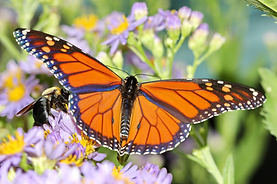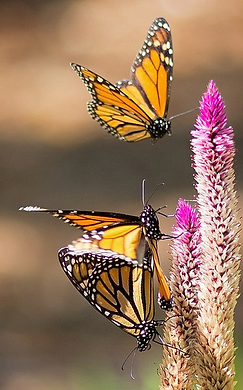
When I was younger I would watch Monarch butterflies float gracefully from flower to flower in my backyard. It was an every day occurrence in the summer. Sadly, it is now only the very rare occasion when I spot one of these beauties, let alone more than one! Because their numbers are diminishing at a rapid rate and it is difficult to only observe one, I get very excited when I see their distinct orange and black wings fluttering around my garden. I watch in awe as they go about their business pollinating the flora, performing an important job we humans take for granted.
We as gardeners need to do everything we can to help save butterflies, especially Monarchs. It doesn’t matter if you’re a beginner or master gardener, we can all do our part to help protect them. Read on to learn some things about the Monarchs and some suggestions to help preserve them.
(Some of the links within this post are affiliate links on which I receive a small compensation from the sale of certain items with no added expense to you.)
(As an Amazon Associate I earn from qualifying purchases.)
Some Info About Monarchs
The Monarch butterfly, known by scientists as Danaus plexippus, which in Greek literally means “sleepy transformation” according to the World Wildlife organization, is a remarkable insect. This insect weighs on average only half a gram. In comparison a penny weights 2.5 grams! Yet they are able to navigate through the powers of nature including high winds, rain, or any other obstacles thrown at them. On their migratory journey some travel each year between 1,200 and 2,800 miles from either southeastern Canada or the northeastern US to the mountain forests of central Mexico. It is believed that Monarchs know when to fly south by observing the position of the sun, which produces shorter days and the changing weather patterns.
Monarchs west of the Rocky Mountains in the United States migrate to California and butterflies in the northeastern section of the United States or eastern Canada migrate to Mexico. Monarchs then hibernate in the south and then emerge in the spring and mate. Then they fly long distances to find milkweed plants, lay their eggs and die. Monarchs can fly up to 100 miles a day!
This has been the seasonal pattern of Monarchs for thousands of years.
Life Cycle of a Monarch Butterfly
4 Stages
The Monarch has 4 stages in its life cycle: egg; caterpillar; chrysalis; and butterfly. An adult female butterfly, which can be identified by the lack of two small black spots on the top surface of the hindwing, (males have two distinct black dots on the top surface), lay their EGGS only on milkweed plants. This stage lasts between 4 and 7 days.
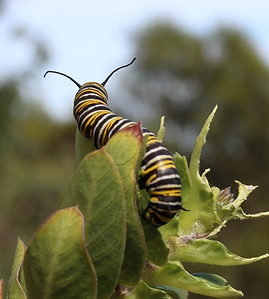
The CATERPILLAR emerges from the egg and goes through a series of molting processes that last 2 weeks. A caterpillar will go through this stage while living inside flower buds, on the underside or the top of leaves, or inside the curling leaves of a milkweed plant.
Part 3 of the life cycle is the CHRYSALIS stage. The chrysalis is also known as a pupa. It is not a cocoon because cocoons encase a moth with silk. The only silk found on a Monarch chrysalis is where the caterpillar attaches the pupa to the stem of a plant. This third stage lasts between 8 and 14 days.
The BUTTERFLY stage consists of four generations which occur over the course of one year. Some spring/ summer Monarchs live for only up to one month, whereas the fall/ winter Monarchs can live 8 months or longer. Each generation constitutes a different event in the life cycle. For more information on the generations and their events, click Monarch Joint Venture.
How Monarch Butterflies Help the Circle of Life
Everyone knows that Monarchs are great pollinators. While they flutter around sipping nectar from flowers, they are gathering pollen on their wings and distributing it to every flower they touch. This pollination process helps produce more flowers and fruits from which humans benefit.
In addition to aiding in the reproduction of various flowers and fruits, this pollination process helps keep the food web in balance. Birds and small animals eat the pollinated plants. Monarchs are also a good food source for birds, small animals, and insects.
If Monarchs become extinct, the entire circle of life may jeopardized.
In addition to the pollination benefits of Monarchs, there is an entire culture wrapped around the Monarch butterfly and its migration.
For more information on how Monarch butterflies bring together conservation and culture, click here.
Where Have All The Monarchs Gone?
Statistics About Monarch Butterflies
The number of Monarch butterflies has declined significantly. According to the ICUN (International Union for the Conservation of Nature) “the eastern Monarch population has declined by 22%-72% over the past decade, and the western population has declined by 66%-91%”. This network of public, private, and nonprofit organizations has classified them as “endangered”. For more information on the endangered Monarch, click here.
The US Fish and Wildlife Service has not put Monarchs on the endangered species list yet, but has recognized that they are at risk.
Why Are the Numbers Declining?
There are many factors contributing to the decline of Monarch butterflies.
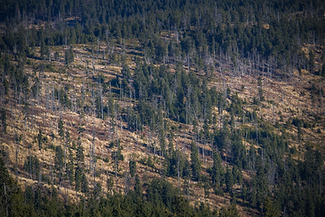
1. Habitat Fragmentation and Loss:
Across the United States and Mexico agriculture expansion is reducing and fragmenting the vast fields of flowers that Monarchs need for survival as they travel on their arduous journey during migration.
In addition to agricultural expansion, urban development is fragmenting large areas of the habitat where high nectar flowers used to grow. Monarchs rely on these vast fields of wild flowers and native milkweed to feed.
2. Variations in Climate:
Drought across the United States has wiped out fields of milkweed, the main food source of Monarchs. Drought has also lead to catastrophic wildfires that ravage both flora and fauna. In addition to drought, severe storms have killed off Monarchs and drastic temperature changes have tricked Monarchs into beginning their migration before the milkweed is available.
Colder, wetter winters may be lethal to the Monarchs, and hotter, drier summers could shift their habitats north. All of these factors have wreaked havoc on the Monarchs’ lives, causing adult Monarch deaths to increase and diminishing the available food for the caterpillars to eat.
3. Legal and Illegal Logging:
Deforestation in areas of Mexico and California have also contributed to the decline of Monarchs. These natural environments are used as shelters during the winter months and protect the Monarchs on their long journeys. Logging contributes to urban sprawl and agriculture expansion.
4. Pesticides and Herbicides
The use of widespread pesticides and herbicides for agriculture on genetically engineered and natural crops is detrimental to the Monarch butterfly. This practice has already killed masses of Monarchs and milkweed, the sole source of food for the Monarch larvae and the habitat in which the adult butterflies lay their eggs.
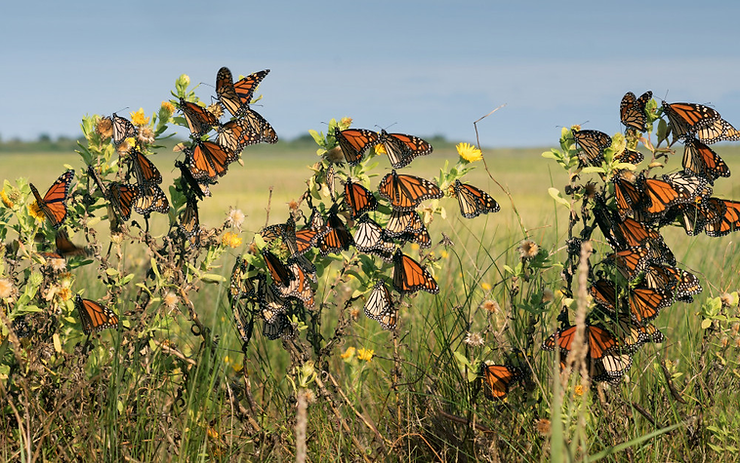
How to Save the Monarchs
Organizations and Non-Profits
There are many organizations and non-profits doing remarkable things to preserve the Monarchs. They have been actively involved in monitoring and conservation efforts. The Monarch butterfly is the official state insect of Illinois, where there is an annual event where volunteers tag Monarchs as they travel north to track their numbers and habits.
One Illinois organization has filed a petition to put the Monarchs on the endangered species list, keeping the federal government aware of the plight of the Monarchs. The government of Illinois has asked everyone to plant native milkweed, prohibited the cutting of milkweed along roadsides, field edges, and inactive fields, and requested residents not to use harmful pesticides and herbicides in their gardens especially on milkweed patches.
These are just a few examples of what organizations and governments have done to preserve the Monarchs.
Individuals and Gardeners
One way to help the Monarchs is to get involved. A national organization involved in saving the Monarchs is the WWF. Read what the World Wildlife Fund (WWF) has been doing to preserve the butterflies.
Plant native milkweed in your garden. Research which variety is native to your area, purchase it and then enjoy Monarch butterflies gently wafting throughout your garden.
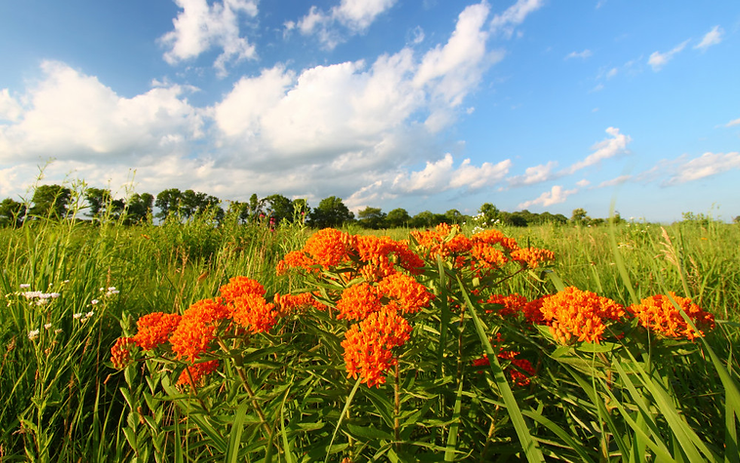
If you have acres of property consider planting a field of milkweed.
Plant wide-faced flowers to make it easier for the Monarch to land and enjoy the nectar.
===<Purchase Milkweed Seeds from Etsy>===
Discontinue using harsh pesticides and herbicides in your garden. Choose an earth friendly brand such as Earth’s Ally Insect Control.
Join a local garden club and create a pollinator garden.
Ask your civic leaders in your home town or state to stop cutting down milkweed along roadsides, as people did in Illinois.
Educate others about the plight of the Monarch and encourage them to take action.
For more information on pollinator plants, click What Flowers Attract Hummingbirds and Butterflies.
Ways to Save Monarchs
I hope you enjoyed reading this post and have learned a little more about the life cycle of Monarchs, how they benefit our planet, and how they are teetering on the edge of extinction. But all is not lost. We as gardeners and concerned citizens can do our part to preserve these delicate beauties. Get involved, share this post, and plant some native milkweed! I know you’ll feel good about the steps you are taking to protect the Monarchs and enable future generations to view and enjoy them.
